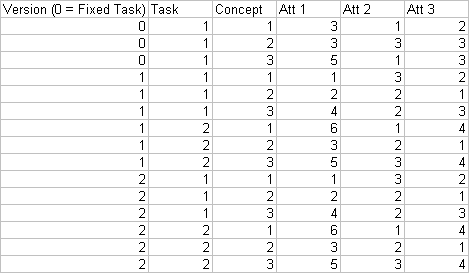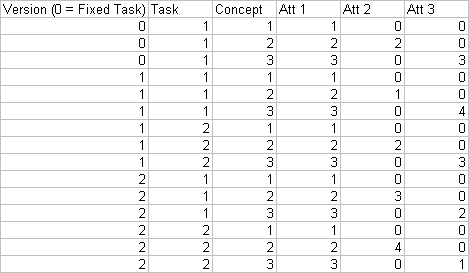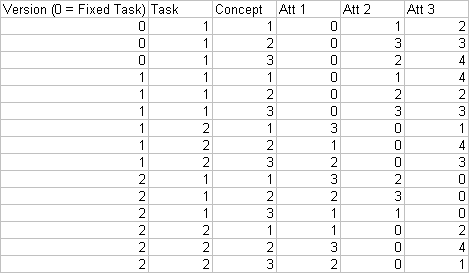One of the strengths of the CBC system is its ability to generate experimental designs (the combinations of attribute levels to show respondent) in an efficient and easy manner. Also, multiple versions of the questionnaire are generated, so different respondents see different combinations of attributes within the choice tasks.
Some researchers wish to export the design, to examine ahead of time the combinations that will be asked of respondents (and perhaps to perform additional analysis regarding the design), or to make minor modifcations to the design.
Other researchers may have developed questionnaire designs using other software and wish to import those designs for fielding within the CBC system. They can do this through CBC's Import Design capability.
For either purpose, the design file uses the same comma-separated (.CSV) layout. A .CSV file can be directly opened and saved with Excel, and the examples below assume you are working with the comma-separated file in Excel. (If using a text editor, the values in the file are separated by commas.)
If you Import a design, any existing design will be overwritten.
Import/Export File Format
The file format is as follows.
Column 1
Indicates the questionnaire version. Any fixed tasks in your study are listed as version 0 (all the examples below include a single fixed task). Fixed tasks are shown to every respondent and are only defined once in the design file (as version 0).
Column 2
Indicates the task (choice set) number.
Column 3
Indicates the concept (alternative) number.
Columns 4 through n
Shows the attribute levels associated with the current concept, task, and version number.
Traditional CBC Layout:
In the example below, each respondent receives a single fixed choice task (version 0, task 1). There are also two random tasks in the questionnaire (i.e. calibration tasks used for part-worth utility estimation). Only two versions of the questionnaire are shown below, though additional versions would continue, following the same pattern. There are three attributes in this study, and three concepts are shown per task.

Alternative-Specific Layout:
In the example below, Attributes 2 and 3 are alternative-specific. When an attribute is not shown in a product concept, it receives a level "0". Attribute 2 only appears when level 2 of attribute 1 is present. Attribute 3 only appears when level 3 of attribute 1 is present.

Partial-Profile Layout:
When an attribute is not shown in a choice task, it receives level "0". In the example below, two of the three attributes are shown per task.

Additional Rules:
For Random tasks (tasks used in estimation), the version must start with 1 and proceed in that order.
If random tasks are present in the file to import, the number of versions and number of tasks must match the number of versions and tasks specified in the software.
The number of concepts must be constant across all tasks. The number of concepts must match the number of concepts specified in the software.
If Partial Profile is specified in the software, the software setting for Number of Attributes Shown in Each Concept must match the number specified in each concept in the file (random tasks only).
Any prohibitions specified in CBC will not be checked against the imported design.